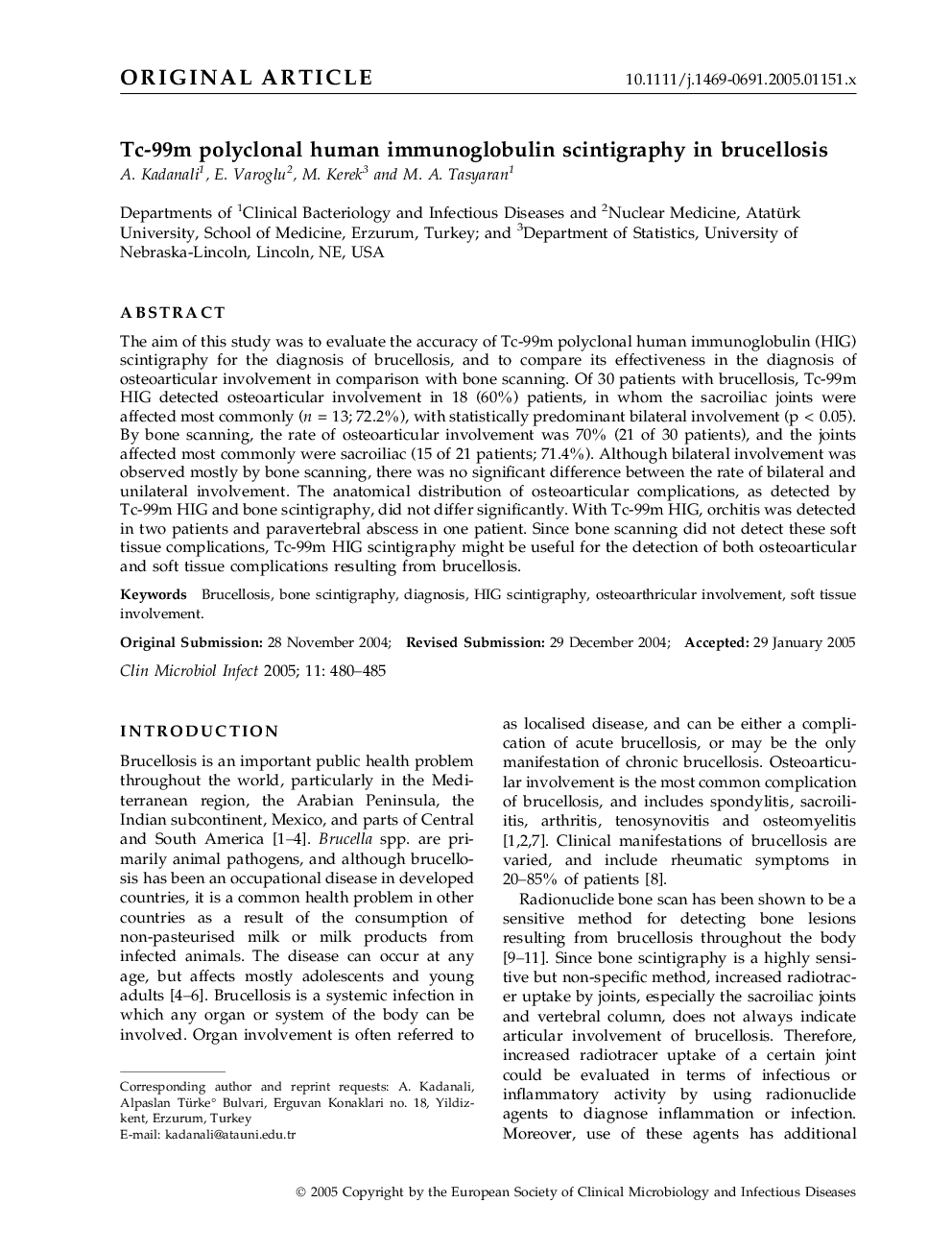| Article ID | Journal | Published Year | Pages | File Type |
|---|---|---|---|---|
| 9276055 | Clinical Microbiology and Infection | 2005 | 6 Pages |
Abstract
The aim of this study was to evaluate the accuracy of Tc-99m polyclonal human immunoglobulin (HIG) scintigraphy for the diagnosis of brucellosis, and to compare its effectiveness in the diagnosis of osteoarticular involvement in comparison with bone scanning. Of 30 patients with brucellosis, Tc-99m HIG detected osteoarticular involvement in 18 (60%) patients, in whom the sacroiliac joints were affected most commonly (n = 13; 72.2%), with statistically predominant bilateral involvement (p < 0.05). By bone scanning, the rate of osteoarticular involvement was 70% (21 of 30 patients), and the joints affected most commonly were sacroiliac (15 of 21 patients; 71.4%). Although bilateral involvement was observed mostly by bone scanning, there was no significant difference between the rate of bilateral and unilateral involvement. The anatomical distribution of osteoarticular complications, as detected by Tc-99m HIG and bone scintigraphy, did not differ significantly. With Tc-99m HIG, orchitis was detected in two patients and paravertebral abscess in one patient. Since bone scanning did not detect these soft tissue complications, Tc-99m HIG scintigraphy might be useful for the detection of both osteoarticular and soft tissue complications resulting from brucellosis.
Related Topics
Life Sciences
Immunology and Microbiology
Microbiology
Authors
A. Kadanali, E. Varoglu, M. Kerek, M.A. Tasyaran,
